Proper toenail and foot care is no less important than a regular manicure. That's why the pedicure procedure has become so popular. Its main task is not only to maintain the beauty of feet and nails, but also to solve various problems. These include ingrown nails, calluses, dry skin, and cracks. There are different types of pedicure, each of which has its own characteristics, techniques, and purpose. The choice depends on the person's needs, the condition of their feet, and the desired result. In this article, we'll look at what a pedicure is, what types exist, and how they differ from each other.
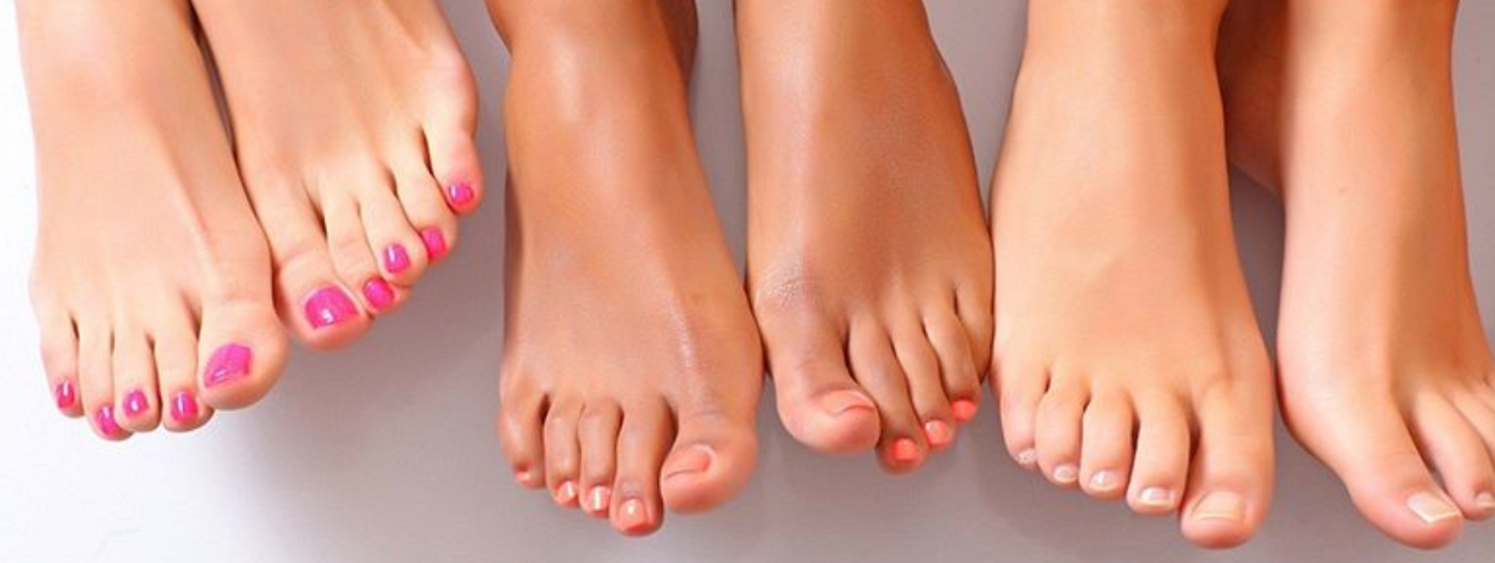
What is a pedicure?
A pedicure is a comprehensive foot, nail, and skin care procedure aimed at maintaining their health, neat appearance, and comfort. It is not only a cosmetic manipulation, but also a way to prevent problems such as calluses, corns, cracked heels, or fungal diseases.
During a pedicure, the following is performed
- cutting and filing of nails;
- cuticle removal;
- treatment of the side rollers;
- removal of dead skin on the feet;
- applying a decorative coating (optional).
Depending on the technique and goals, a pedicure can be aesthetic, wellness, or therapeutic.
Types of pedicure
Today, beauty salons offer different types of pedicures, which differ in their techniques and tools. Each of them has its own advantages and is suitable for different situations — from daily care to solving serious foot problems. Let's look at the main types of pedicure, namely classic, European, hardware, medical, and SPA.
Classic pedicure
The first type of pedicure is a classic pedicure, also known as a trimming pedicure. This is a traditional technique that uses cutting tools. The procedure begins with steaming the feet in a warm bath with salt, essential oils, or herbal infusions. This softens the skin and makes it easier to process. Then the nail technician cuts the nails to give them a neat shape, removes the cuticle with nippers or scissors, and cleans the dead skin on the feet with a pumice stone. The session ends with the application of a moisturizer and, if desired, a decorative coating.
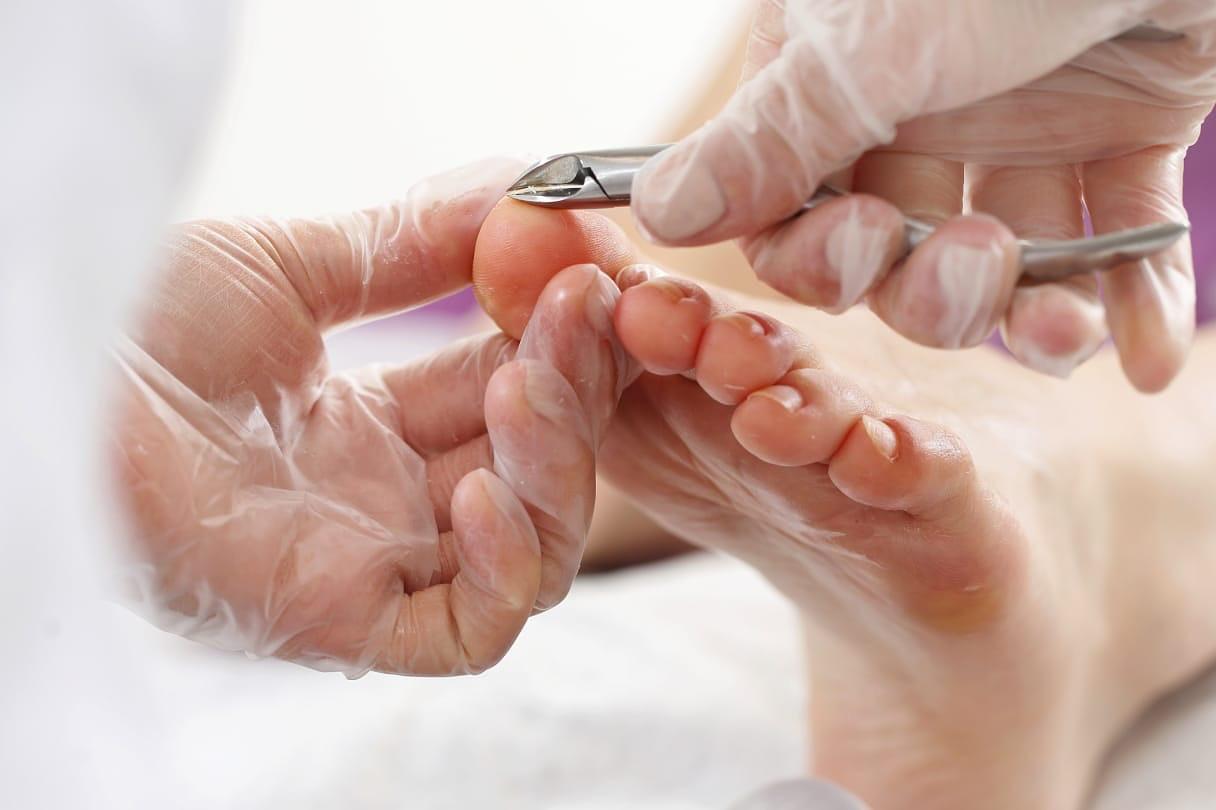
The main advantages of a classic pedicure are speed and thoroughness. It is ideal for those who want to quickly put their feet in order, especially if the skin of the feet is not too rough. However, this technique also has disadvantages. The use of cutting tools can lead to irritation or cuts.
European pedicure
The next type of pedicure is European or unhedged. This is a delicate procedure that is an alternative to the classic method. Its main feature is the rejection of cutting tools and steaming. Instead, the cuticle and rough skin on the feet are softened with special products (keratolytics) based on acids or oils. After that, it is removed with an orange stick, file, or scrub. The procedure is completed with moisturizing and light massage. Optionally, a decorative coating can be applied.
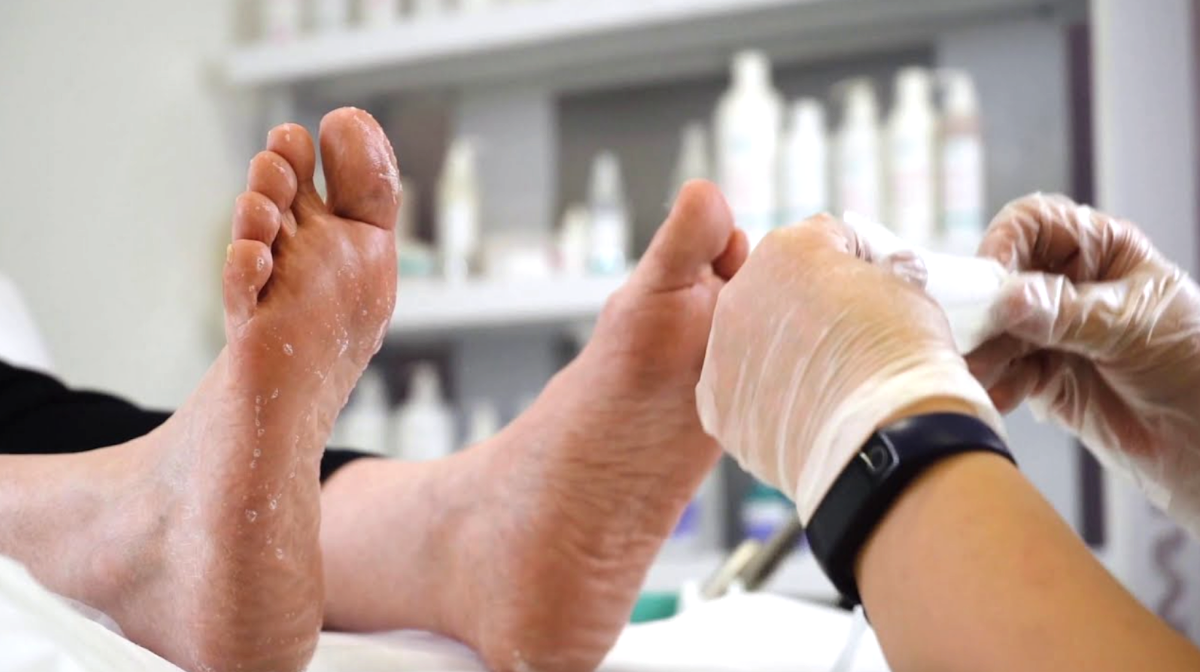
This type of pedicure is considered the safest because the risk of injury is minimal. That is why it is perfect for people with sensitive skin. With regular use of this procedure, the intensity and speed of cuticle growth gradually decreases. However, it is worth noting that this method is not suitable for very rough skin or feet with deep calluses.
Hardware pedicure
The next type of pedicure is called hardware pedicure. This is a modern method of foot care. Unlike the classical technique, steaming or cutting tools are not used here. All manipulations are performed using a special device with nozzles (drill bits). Instead of baths, softening agents are used — acid-based keratolytics. They delicately dissolve keratinized skin.
This type of pedicure is performed according to the following scheme:
- The legs are treated with an antiseptic.
- The length of the nails is adjusted with the help of nippers and a nail file.
- The keratolytic is applied to the skin for 5-10 minutes.
- The rest of the product is removed with a paper towel.
- The device is used to treat the cuticle, lateral rollers, and feet. The drill bits are selected depending on the task: skin resurfacing, corn removal, or cuticle lifting and removal.
- Oil or moisturizer is applied to the feet.
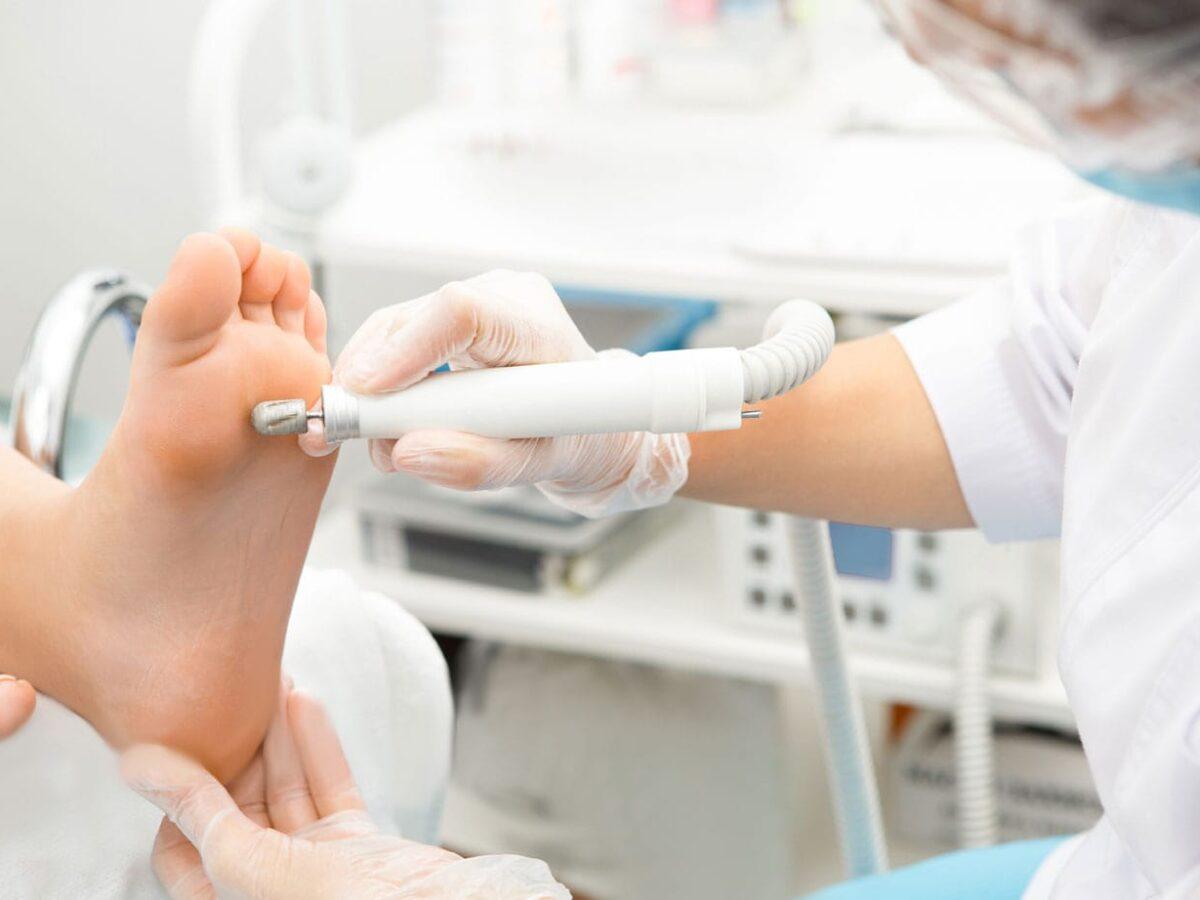
Hardware pedicure has many advantages:
- The drill bits allow you to work only with the dead skin layer without affecting the healthy skin, which reduces the risk of injury.
- Thanks to careful grinding, the dead skin grows more slowly, so the feet remain smooth for up to 3-4 weeks.
- During the procedure, clients do not experience discomfort if the nail technician chooses the right attachments and the speed of the device.
- Hardware pedicure allows you to work on hard-to-reach areas, such as between the fingers or around the nails, where files or pumice stones are less effective.
This type of pedicure is ideal for people with dry or sensitive skin, cracked heels, calluses, or corns.
Medical pedicure
A medical pedicure is a specialized procedure that goes beyond cosmetic care and focuses on improving the health of feet and nails. It is aimed at eliminating specific problems. This type of pedicure is performed by podiatrists, who are medically trained specialists who specialize in foot diseases. Such nail technicians not only take care of your feet, but also diagnose problems, select individual solutions, and, if necessary, collaborate with dermatologists or orthopedists.
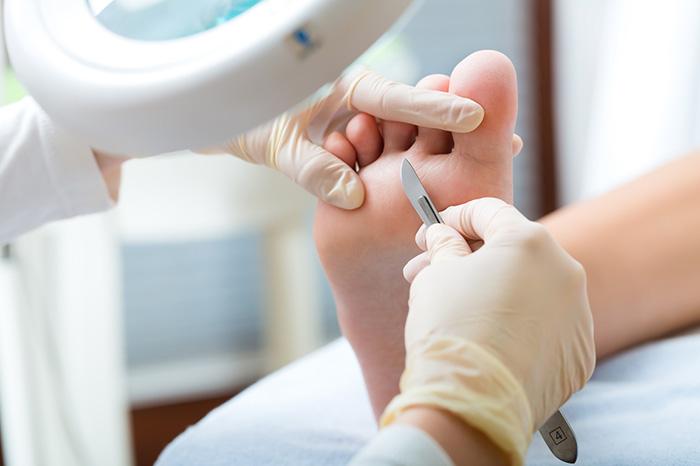
The medical pedicure procedure is usually performed in sterile conditions. The podiatrist begins with an examination of the feet to assess their condition and identify problem areas. In his work, the specialist uses:
- a device with various attachments that are selected depending on the task;
- professional softening agents (keratolytics) that effectively dissolve keratinized skin;
- sterile hand instruments (curettes, scissors, forceps, etc.).
Additionally, antiseptics, healing ointments, orthopedic products, and dip systems are used to correct the nail plate.
This type of pedicure solves a wide range of foot and nail problems. The main ones include:
- Ingrown and deformed nails.
- Calluses and corns.
- Cracks in the heels.
- Hyperkeratosis.
- Diabetic foot.
- Inflammatory processes.
- Fungal lesions.
SPA pedicure
SPA pedicure is a combination of foot care and relaxation. In the process of its implementation, cosmetics with a high content of oils, plant extracts and vitamins are used. The procedure itself consists of the following steps:
- steaming feet in a bath with aromatic oils or salt;
- foot peeling with a scrub;
- removal of dead skin (with a nail file or pumice stone);
- foot massage with moisturizer;
- applying nail polish (optional).
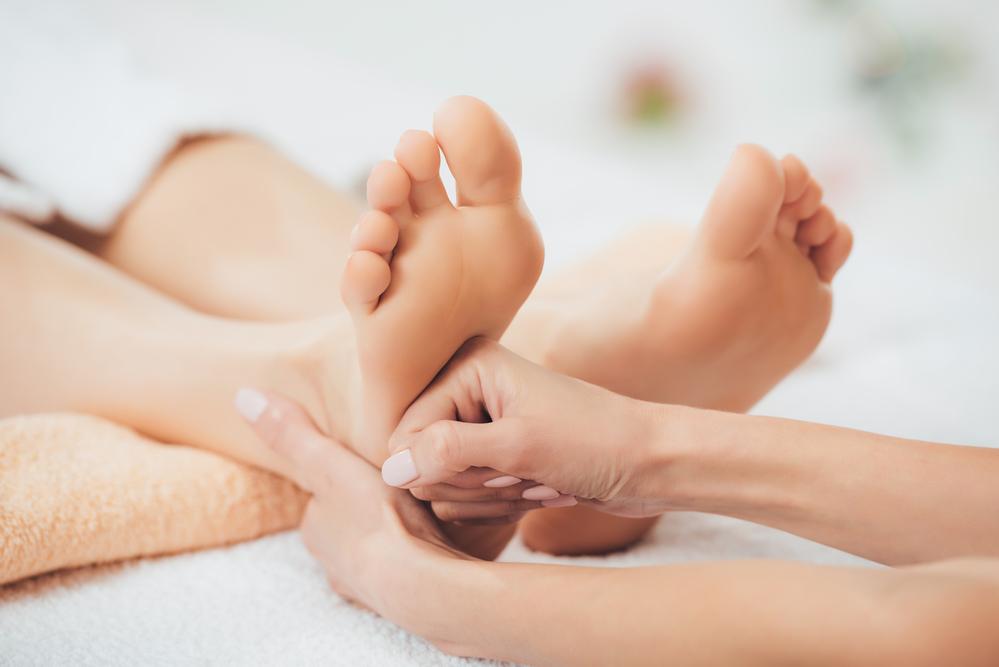
This type of pedicure is chosen for relaxation and aesthetic pleasure. It is ideal for dry skin because it intensively moisturizes and softens it. But it is worth remembering that an SPA pedicure has contraindications. It should not be done during pregnancy, as well as in the presence of nail fungus, varicose veins, diabetes, and rashes of any kind.
Conclusion.
A pedicure is not just a cosmetic procedure, but a way to take care of the health and beauty of your feet. Thanks to the variety of types of pedicures, everyone can find something that meets their needs. A classic pedicure is suitable for regular care, a European pedicure for those with sensitive skin, a hardware pedicure for those with dry and rough skin, a medical pedicure for solving specific problems, and an SPA pedicure for relaxation. The choice depends on the condition of your feet and the result you want to get in the end.
